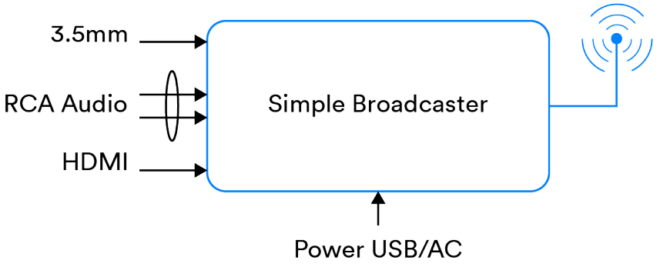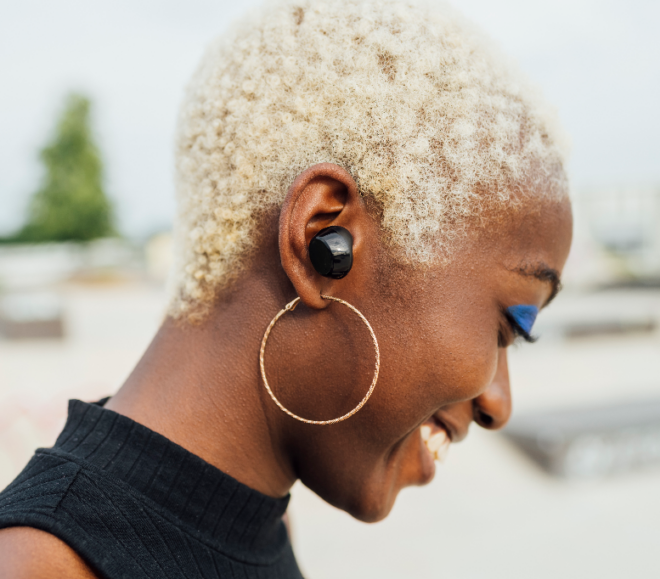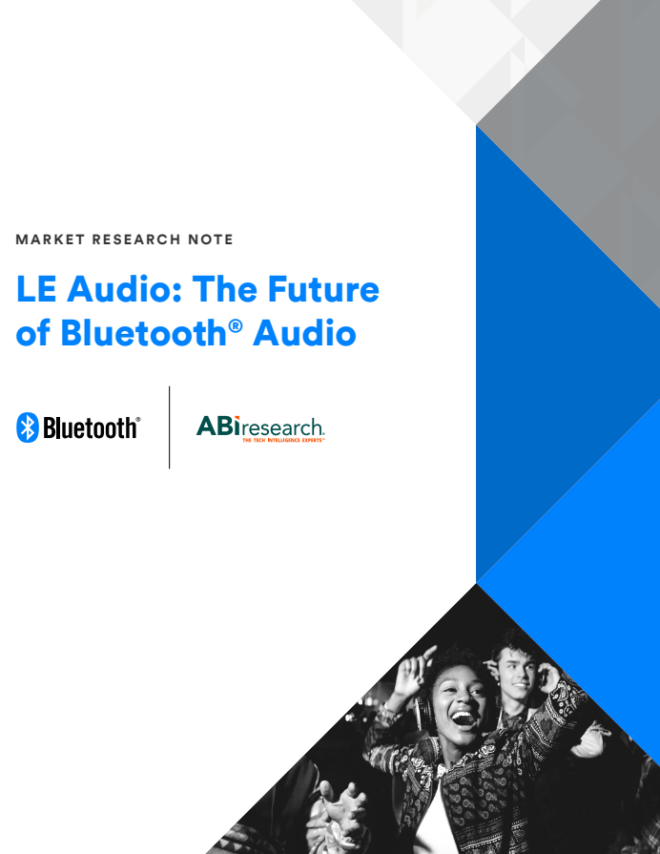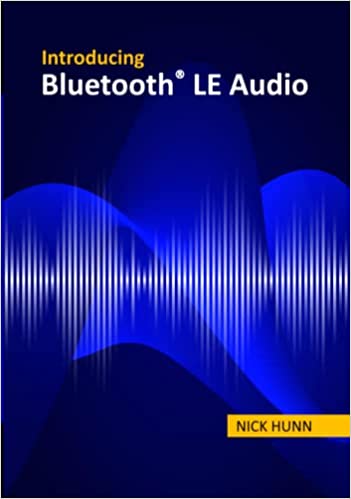Assistive listening technologies are not just about hearing health and a sense of well-being. For people with hearing loss, they are essential to their safety, inclusion, information, and independence.
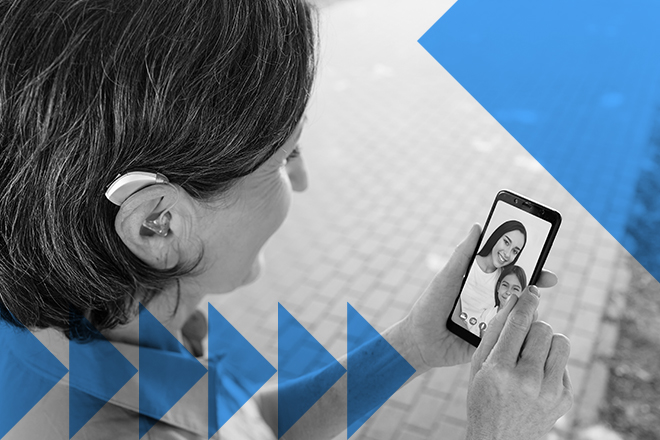
Current assistive listening system (ALS) technologies provide great benefits to people with hearing loss, but deployment has been limited relative to the total addressable market of public spaces. The Bluetooth Special Interest Group (SIG) is working closely with the hearing industry – including hearing instrument manufacturers, assistive listening system manufacturers, and hearing associations and advocacy groups – to define and introduce the next generation of assistive listening system technology, Auracast™ broadcast audio.
This new Bluetooth® capability will simplify deployment and make broader availability of ALS possible for people with hearing loss. However, complete market saturation for Auracast™ broadcast audio in public spaces will take time. Coexistence with current ALS technologies will be essential for public locations to offer audio accessibility to people with hearing loss.
Assistive Listening Technologies Today
For decades, a telecoil built into hearing devices has allowed users to access audio within a location enabled with a hearing loop without the need for a separate receiver. This longstanding technology allows hearing instrument users to access assistive audio in public locations, such as theaters, train stations, places of worship, and countertop conversations. However, these solutions have been relatively slow to gain momentum for multiple reasons. First is a historic lack of awareness of hearing loss being a disability and covered by accessibility legislation has been one barrier. Also, solutions today do not have broader applicability beyond people with a telecoil in their hearing instrument, masking the true demand and need for assistive listening in public spaces.
As hearing loss is a hidden disability and the need for assistive listening systems is not always recognized, the installation of solutions like hearing loops has been primarily driven by regulatory requirements and calls for compliance by local advocates. However, the desire to meet the needs and rights of people with hearing loss is growing on a global scale.
![]()
MARKET RESEARCH
LE Audio: The Future of Bluetooth® Audio
Get new forecasts about when and which audio devices will adopt Auracast™ broadcast audio, along with predictions for when public locations will deploy this new Bluetooth capability to enable new audio use cases in their venues.
Assistive Listening Technology in Deployment Today
Hearing Loops: With hearing loops, audio is transmitted from a nearby source, such as a presenter’s microphone in a conference hall, to a hearing loop driver. The driver converts sound to a magnetic field via a wire loop that is placed around a specific room or hearing space. The sound is picked up by the telecoil built into a hearing instrument or cochlear implant, converting it back into an audio signal within the device.
Auracast™ broadcast audio use cases and experiences will incentivize venues to install it, bringing greater accessibility to more hearing instrument users.
FM/Radio: For FM/radio, audio is transmitted from a source system via an FM radio frequency transmitter to a separate receiver worn by the listener. Audio from the receiver is heard by the listener using headphones or a telecoil coupler via a personal inductive neck loop. The frequency range for FM receivers can vary by location and operates in regional license-free frequency bands.
Infrared: With infrared (IR), audio is transmitted from a source device (e.g., a sound system) to an IR transmitter with a modulator that sends the audio signal into an area flooded with infrared light. This signal is picked up by a compatible receiver that is predominately in line of sight to the IR transmitter. Audio from the receiver is heard by the listener using headphones or a telecoil coupler supported by a personal inductive neck loop worn by the listener. Infrared may not be suited for outdoor locations or venues with lots of glass or glossy surfaces in sunlight.
For more on existing ALS solutions, check out this detailed comparison of available assistive listening technologies.
Auracast™ Broadcast Audio as an ALS
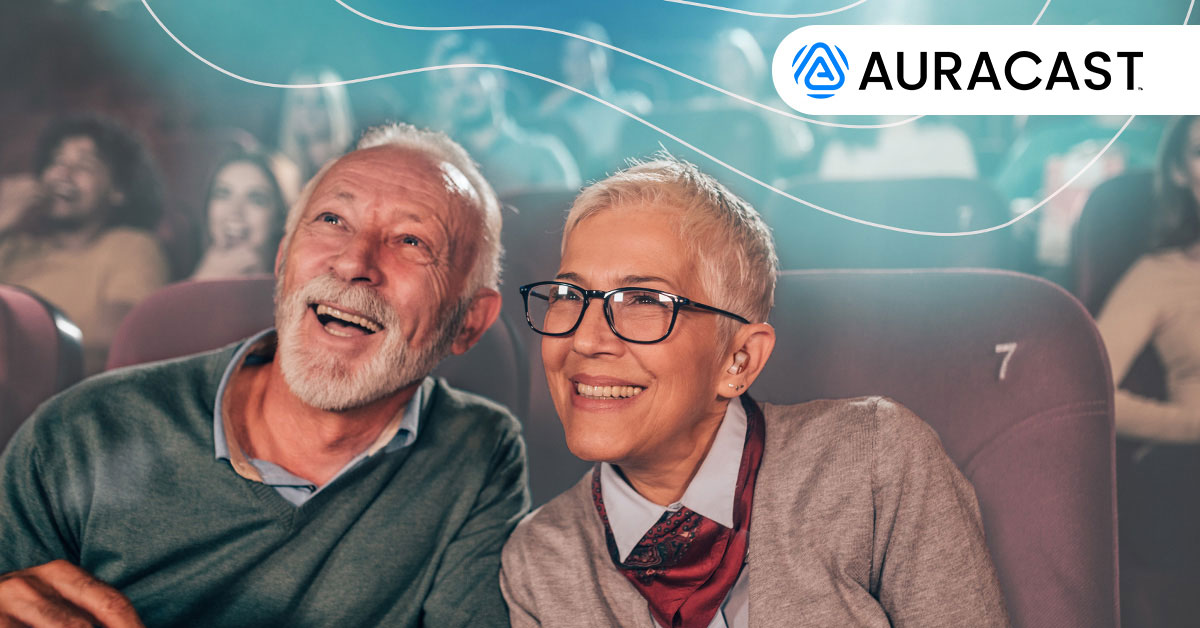
The various assistive listening technologies deployed in a multitude of public venues worldwide have fragmented the ALS market and led to inconsistent availability and varying user experiences. Auracast™ broadcast audio has the potential to solve many of these challenges. It is universal, highly reliable, and flexible while being relatively inexpensive to deploy and taking advantage of a user’s personalized equipment (e.g., earbuds, headphones, hearing aids, etc.). A low-impact alternative that benefits a wider range of visitors and experiences in public spaces, Auracast™ broadcast audio use cases and experiences will incentivize venues to install it, bringing greater accessibility to more hearing instrument users. Users receive sound directly in their hearing aids, regardless of the brand, and without the need for accessories.
Learn more about Auracast™ broadcast audio use cases.
How It Works
A single, centrally located Auracast™ transmitter (e.g., smartphone, tablet, PC, TV, PA system, etc.) can broadcast audio to an unlimited number of in-range Auracast™ receivers. Receivers do not need to be in a specific enabled section or in line of sight to the transmitter. The nearby Auracast™ transmitter will broadcast a signal, notifying Auracast™ receivers and possible assistants (e.g., smartphones, smart watches, etc.) that there is an Auracast™ transmission available in the area.
Auracast™ assistants scan for these signals and provide a user interface (UI) to enable users to select an Auracast™ transmission, similar to the UI commonly used to connect to Wi-Fi networks in public spaces. A broadcast assistant is not required in all instances; however, it will be one of the most common methods to find and join an Aurcacast™ broadcast. Once an Auracast™ transmission is selected, the Auracast™ assistant informs the Auracast™ receiver (e.g., headphone, earbud, hearing aid, etc.) how to join the Auracast™ transmission. For users who are unable or reluctant to use a smartphone, solutions will be made available that allow an Auracast™ broadcast to be received without needing a smartphone. However, for situations where many relevant audio signals are available or a passcode is required for encrypted transmissions, the use of an assistant device will greatly facilitate the process of connecting to the desired signal.
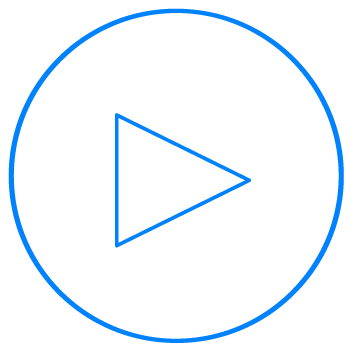
FEATURED VIDEO
The Next Generation of Assistive Listening is Coming
The hearing aid industry turned to Bluetooth® technology to overcome the challenges of traditional assistive listening systems (ALS) with Auracast™ broadcast audio. See why this new Bluetooth capability will make broader deployment and increased availability of ALS for people with hearing loss possible while also expanding the applicability of these systems to consumers with all levels of hearing health.
Industry Recommendations and the Importance of Coexistence
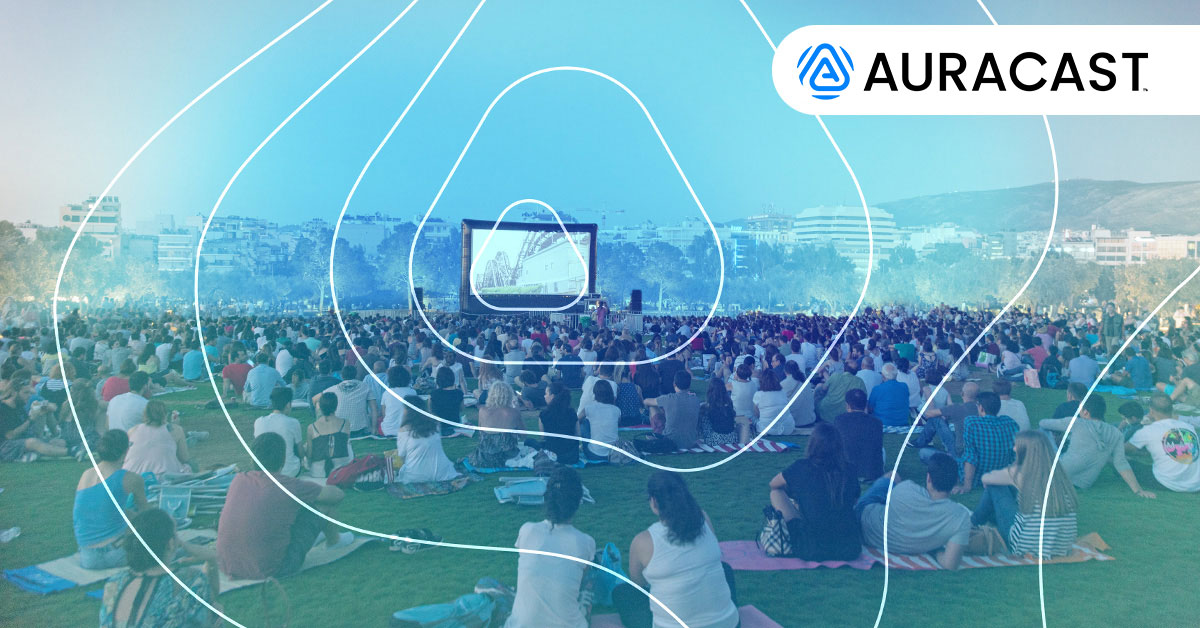
There are few concerns regarding the promised efficacy of Auracast™ broadcast audio, and many in the hearing industry recognize its potential as a next-generation ALS. But some industry experts recommend manufacturers implement Auracast™ broadcast audio while maintaining existing telecoil capabilities and loop installations until Auracast™ broadcast audio has gained mass adoption in the market. If telecoil was immediately removed from new hearing instruments, and if existing hearing loop manufacturers immediately stopped supporting hearing loop implementations in favor of Auracast™ systems, that could have a detrimental effect, isolating hearing instrument users that currently rely on telecoil.
There is also a worry that new phones may not work with older models of hearing instruments that are not compatible. As Auracast™ broadcast audio gains adoption, new devices must carefully consider all of the applications of the existing hearing loop usage, much of which is embedded in standards and currently mandated.
There will be a significant period of overlap between both technologies before Auracast™ broadcast audio reaches full market potential.
Recently, the International Federation of Hard of Hearing People (IFHOH) published a declaration praising the Bluetooth SIG for its work with the European Hearing Instrument Manufactures Association (EHIMA) in creating Auracast™ broadcast audio, “a wireless universal technology…that promises to assist hard of hearing individuals to hear better in venues where hearing aids and cochlear implants are insufficient to function.”
However, the IFHOH also stressed the importance of coexistence between Auracast™ broadcast audio and existing assistive listening technologies. “IFHOH foresees a world where FM, IR, and hearing loop systems (including those found in taxis, ticket counters, airports, theatres, etc.) will function for the foreseeable future alongside Auracast™ systems. Therefore, all assistive listening systems, hearing aids, and cochlear implants need to be Auracast™ broadcast audio + telecoil compatible.”
There will be a significant period of overlap between both technologies before Auracast™ broadcast audio reaches full market potential, which could take years, maybe even a decade, to realize. Until the availability of Auracast™ broadcast audio (within the end-user community) exceeds the availability of other systems (e.g., telecoils), it should be offered as an additional ALS option.
Standardizing Auracast™ Broadcast Audio as an ALS
Industry experts agree that an additional international standard for assistive listening supporting the installation of Auracast™ broadcast audio in public spaces, similar to IEC60118-4 for hearing loops, will be essential to ensuring consistency and quality of service worldwide. Requirements may include location deployment guidelines, such as setting appropriate audio levels for the hearing aid, frequency response levels, signal-to-noise limits, dynamic range limitations, and ensuring end-to-end latency is minimized and below defined limits. The sooner a strong, clear standard for the installation of Auracast™ broadcast audio is in place, the sooner it will benefit the industry and the end user.
The Bluetooth SIG provided some guidance to transmitter manufacturers and installers with the publication of the Auracast™ Simple Transmitter Best Practices Guide.
The Future of Assistive Listening Is Coexistence
Auracast™ broadcast audio is an easy, cost-effective option to deploy.
There is no question a functioning ALS in public locations is an important factor in maintaining appropriate hearing health of individuals with hearing loss. Auracast™ broadcast audio is an easy, cost-effective option to deploy. It is simple to use, and it is reliable. But complete market saturation for universal audio accessibility in public spaces will take some time. The Bluetooth SIG agrees that the coexistence of Auracast™ broadcast audio with existing assistive listening technology will be essential to enhancing audio experiences for hearing instrument users and offering them greater options for accessibility in public locations.
About the Authors
Andrew Thomas is the market development director of Contacta Systems Ltd, a leading manufacturer of assistive listening technology products. Andrew is also an advisor and chair of multiple committees and organizations, including chairman of the International Hearing Loop Manufacturers Association (IHLMA), appointed in 2016, and chair of the International Hearing Access Committee (IHAC).
Rob Drullman is a trained phonetician and has been working in the field of speech and hearing for over 30 years. Rob works as an independent researcher, project manager, and consultant. He has also been secretary of the technical committee of the European Hearing Instrument Manufacturers Association (EHIMA) since 2016 and project leader of EHIMA’s Auracast™ support team in the regulatory committee.
Chuck Sabin is the senior market development director of the Bluetooth SIG, Inc. Chuck is responsible for leading and driving the strategic priorities for market research, market planning, and business development for Bluetooth® technology, including the awareness and evangelism of Auracast™ broadcast audio.

FEATURED INNOVATION
Auracast™ Broadcast Audio
Auracast™ broadcast audio will deliver life-changing audio experiences that will enhance the way you engage with others and the world around you.
聴覚補助技術がもたらすものは、健全な聞こえや幸福感の向上にとどまりません。難聴者の方々の安全、社会参加、情報の獲得、そして自立に欠かせない技術です。

現在の聴覚補助システム(ALS)技術は、難聴者の生活に大きなメリットをもたらしています。しかし、TAM(獲得可能な最大市場規模)となり得る公共の場での採用・導入実績は現状ではわずかです。Bluetooth SIG(Special Interest Group)は、補聴器メーカー、ALSメーカー、聴覚業界団体や支援団体など、聴覚業界と密に協力し、次世代ALS技術となるAuracast™ ブロードキャスト オーディオの定義と導入に取り組んでいます。
Bluetooth®︎のこの新機能はより容易に導入・展開できるため、難聴者により広範にALSを提供できるようになります。とはいうものの、Auracast™ ブロードキャスト オーディオが公共の場に完全に普及するまでには時間が必要です。そのため難聴者に公共の場での音声アクセシビリティを提供するには、現在のALS技術との共存が必要不可欠なのです。
聴覚補助技術の現状
何十年も前から、難聴者は補聴器に埋め込まれたテレコイルを使用して、受信機を別途必要とせずに、ヒアリングループを備えた場所で音声を聞くことができました。この長年の技術のおかげで、補聴器ユーザーは劇場、駅、礼拝施設、窓口などの公共の場での聴覚補助を利用することができました。しかしながら、いくつかの理由でこの普及は遅々としたものでした。第一に、これまで難聴が障害の一つであり、アクセシビリティに関する法令の対象であるという認識が薄かったことが、大きな障壁となっていました。また、現行の技術では、テレコイル付きの補聴器を装着している人以外への幅広い活用ができず、公共の場での聴覚補助に対する真の需要やニーズが見えていませんでした。
難聴は目に見えない障害であり、ALSに対するニーズが必ずしも認識されるとは限らないため、ヒアリングループなどの設置は主に法的に求められる場合や現地支援団体による法令順守の訴えが原動力となって進められてきました。その一方で、難聴者のニーズと権利に応えるべきだという機運が世界的に高まっています。
現在使用されている聴覚補助技術
ヒアリングループ:音声は、会議場の講演者のマイクなど近くの音源から、ヒアリングループドライバーに送信されます。ドライバーは、部屋または特定の場所を囲むように敷設された配線ループを通して、音声を磁場に変換します。音声は補聴器または人工内耳に内蔵されたテレコイルで拾われ、そこで音声信号に戻されます。
FM/無線:音声は音源システムからFM無線送信機を介して、利用者がそれぞれ装着している受信機に送信されます。受信機の音声はヘッドホン、または個人用誘導ネックループを介しテレコイルカプラーを備えた補聴器で聞くことができます。FM受信機の周波数帯は場所によって異なり、各地域における免許不要の周波数帯が使用されます。
赤外線:赤外線(IR)の場合、音声は音源デバイス(音響システムなど)からモジュレーター付きの赤外線送信機に送られ、そこから音声信号が赤外線として放射されます。この信号は、赤外線送信機の見通し線内にある互換性のある受信機で拾われます。受信機の音声はヘッドホン、またはユーザーが装着する個人用誘導ネックループを介してテレコイルカプラーを備えた補聴器で聞くことができます。赤外線は屋外や太陽光の当たるガラス面・光沢面の多い会場には適さない可能性があります。
既存のALSソリューションについては、こちらの詳細な比較をご覧ください。
ALSとしてのAuracast™ ブロードキャスト オーディオ

世界中の公共の場にさまざまな聴覚補助技術が導入されたことにより、ALS市場は細分化され、必ずしも利用できないことや、使い勝手に差が生じています。Auracast™ ブロードキャスト オーディオには、こうした課題の多くを解決できる可能性があります。汎用性があり、信頼性が高くかつ柔軟でありながら、比較的安価に導入でき、利用者の個別の機器(イヤホン、ヘッドホン、補聴器など)を活用できます。Auracast™ ブロードキャスト オーディオは、公共の場での幅広い利用者や体験に活用でき、かつ負担の少ない選択肢であり、そのユースケースや体験によって施設に導入を促し、より多くの補聴器ユーザーにアクセシビリティの拡充をもたらします。利用者は、補聴器のメーカーを問わず、追加の装備も不要で、自分の補聴器を使って音声を直接聞くことができます。
Auracast™ ブロードキャスト オーディオのユースケースはこちらで詳しくご紹介しています
仕組み
1台のAuracast™送信機(スマートフォン、タブレット、PC、TV、PAシステムなど)を中心に、受信範囲内にあるAuracast™受信機に台数制限なく音声をブロードキャスト配信できます。受信機は特定の受信場所や送信機の見通し線内にある必要はありません。受信範囲内にあるAuracast™の送信機は信号を配信し、Auracast™受信機やアシスタント(スマートフォン、スマートウォッチなど)に利用可能なAuracast™配信があることを知らせます。
Auracast™アシスタントではこのような信号をスキャンして探し、Auracast™配信を選択するためのユーザーインターフェース(UI)を提供します。UIは公共Wi-Fiネットワークへの接続で一般的に使用されるUIと同様のものです。ブロードキャストアシスタントは必須ではありませんが、Aurcacast™配信を探して受信するための最も一般的な手段の一つです。Auracast™配信が選択されると、Auracast™アシスタントはAuracast™受信機(ヘッドホン、イヤホン、補聴器など)に、Auracast™配信の受信方法を知らせます。スマートフォンが使用できない、もしくは使用を希望しない人のために、Auracast™のブロードキャスト配信をスマートフォンを必要とせずに受信する方法も用意されています。ただし、受信できる音声信号が多数ある場合や暗号化された配信の受信にパスワードが必要な場合には、アシスタントデバイスを使用することで、希望する配信を受信するまでのプロセスが大幅に容易になります。
業界の推奨と共存の重要性
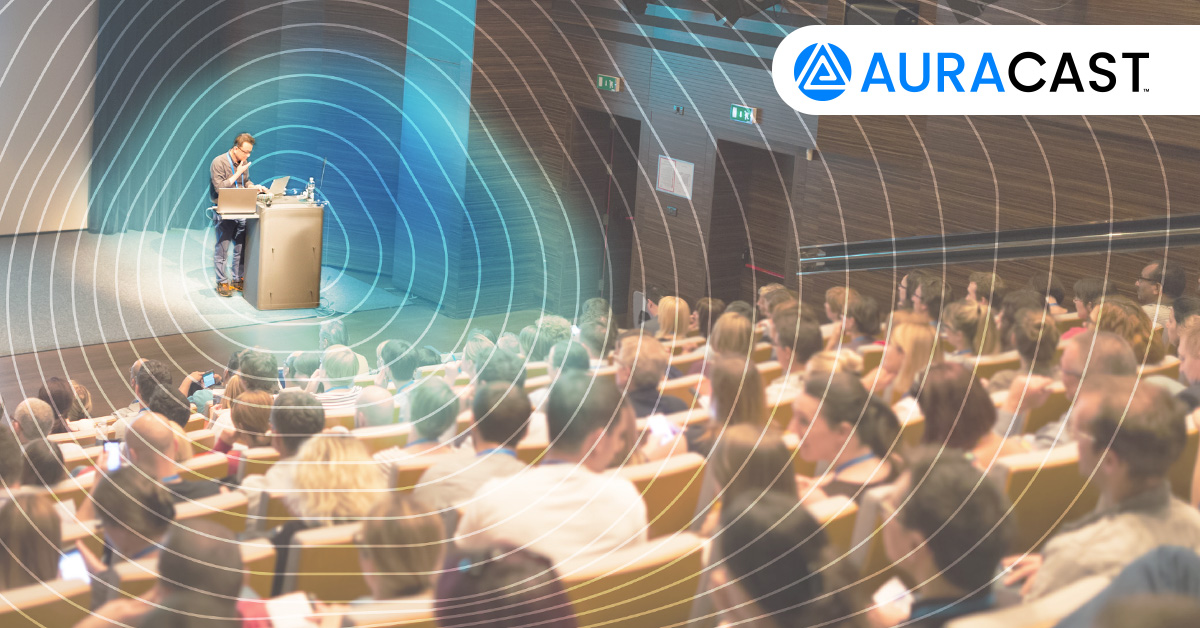 Auracast™ ブロードキャスト オーディオが約束する有用性を疑う声はほぼなく、聴覚業界の関係者の多くが、次世代のALSとしての可能性を認めています。しかしながら一部の業界専門家はメーカーに対し、Auracast™の大規模な普及が実現するまでは、Auracast™ ブロードキャスト オーディオの実装と並行して現行のテレコイル機能とループ設備も維持することを推奨しています。補聴器から直ちにテレコイルがなくなり、ヒアリングループのメーカーがAuracast™システムに鞍替えしてヒアリングループへの対応をやめてしまえば、現在テレコイルを利用している補聴器ユーザーが取り残されるという悪影響が生じかねないのです。
Auracast™ ブロードキャスト オーディオが約束する有用性を疑う声はほぼなく、聴覚業界の関係者の多くが、次世代のALSとしての可能性を認めています。しかしながら一部の業界専門家はメーカーに対し、Auracast™の大規模な普及が実現するまでは、Auracast™ ブロードキャスト オーディオの実装と並行して現行のテレコイル機能とループ設備も維持することを推奨しています。補聴器から直ちにテレコイルがなくなり、ヒアリングループのメーカーがAuracast™システムに鞍替えしてヒアリングループへの対応をやめてしまえば、現在テレコイルを利用している補聴器ユーザーが取り残されるという悪影響が生じかねないのです。
また、新しいスマートフォンが互換性のない旧モデルの補聴器とうまく連携できない懸念もあります。Auracast™ ブロードキャスト オーディオの採用が進む中でも、新規デバイスは現行のヒアリングループの使用法の全用途を慎重に考慮する必要があります。その用途の多くは各種標準に含まれ、義務付けられています。
先日、国際難聴者連盟(IFHOH)は声明において、Bluetooth SIGが欧州補聴器工業会(EHIMA)と協力し、「補聴器や人工内耳が十分に機能しない場所において難聴者への支援を約束する、ワイヤレスの普遍的な技術」であるAuracast™ ブロードキャスト オーディオを生み出した取り組みを称賛しました。
一方、IFHOHはAuracast™ ブロードキャスト オーディオと既存の聴覚補助技術の共存の重要性についても強調しています。「IFHOHでは、当面は(タクシー、チケット売り場、空港、劇場などにある)FM、赤外線、ヒアリングループの各システムがAuracast™のシステムと並行して利用されると考えています。このため、すべてのALS、補聴器、人工内耳はAuracast™ ブロードキャスト オーディオとテレコイルの両方に対応している必要があります」
Auracast™ ブロードキャスト オーディオが市場に行き渡るまでは数年から10年もの時間を要する可能性があり、その間は両方の技術が長期的に重複して存在することになります。Auracast™ ブロードキャスト オーディオの普及が(エンドユーザー側で)他のシステム(テレコイルなど)を上回るまでの間は、ALSの選択肢の一つとして提供されるべきです。
Auracast™ ブロードキャスト オーディオをALSとして標準化
業界専門家は、世界中でサービスの一貫性と品質を保証するには、公共の場におけるAuracast™ ブロードキャスト オーディオの設置について、ヒアリングループのIEC60118-4のような聴覚補助の国際標準規格が必要だという意見で一致しています。その要求事項には、補聴器用の音声レベルの設定などの導入ガイドライン、周波数レスポンスレベル、信号と雑音の比率(SN比)の限度、ダイナミックレンジの制約や、エンドツーエンドの遅延が最小限に抑えられ規定の下限値以下となることの保証などが含まれるでしょう。Auracast™ ブロードキャスト オーディオの設置に関する標準の明確化が早いほど、業界もエンドユーザーもより早くその利益を享受することができます。
Bluetooth SIGでは、送信機のメーカーおよび設置事業者を対象にシンプルなAuracast™送信機に関するベストプラクティスガイドを公開しています。
聴覚補助の未来は共存にある
公共の場における機能的なALSの存在が、難聴者にとって適切な聞こえの健康を維持するための重要な要素であることに疑問の余地はありません。Auracast™ ブロードキャスト オーディオは、設置が容易で費用対効果に優れた選択肢です。使い勝手がシンプルで、高い信頼性があります。ですが、完全に普及し、あらゆる場所で利用できるようになるには時間が必要です。Bluetooth SIGも、補聴器ユーザーのオーディオ体験を拡充し、公共の場でのアクセシビリティにより良い選択肢を提供するには、Auracast™ ブロードキャスト オーディオと既存の聴覚補助技術の共存が必須であると考えています。
筆者について
アンドリュー・トーマス(Andrew Thomas) 聴覚補助技術製品の大手メーカー、Contacta Systems Ltdのマーケットデベロップメントディレクター。2016年に任命された国際ヒアリングループ工業会( International Hearing Loop Manufacturers Association、IHLMA)会長や国際聴覚アクセス委員会( nternational Hearing Access Committee、IHAC)委員長など、複数の委員会や組織の顧問や会長も務めています。
ロブ・ドラルマン(Rob Drullman) 音声学の専門家で言語聴覚分野での30年以上の経験を持ち、独立系の研究者、プロジェクトマネージャー、コンサルタントとして活躍しています。2016年から欧州補聴器工業会(EHIMA)の技術委員会の書記であり、EHIMAの規制委員会ではAuracast™サポートチームのプロジェクトリーダーも務めています。
チャック・セイビン(Chuck Sabin) Bluetooth SIG, Inc.のシニアマーケットデベロップメントディレクター。 Auracast™ ブロードキャスト オーディオに関する認知向上・啓蒙活動をはじめとする、Bluetooth®︎技術の市場調査、市場計画、事業開発における戦略的優先事項の指揮と推進を担当しています。

![20240208 GN LONDON 04 LARA 0964 Edit copy[1]](https://www.bluetooth.com/wp-content/uploads/2024/04/20240208_GN_LONDON_04_LARA_0964-Edit-copy1.jpg)
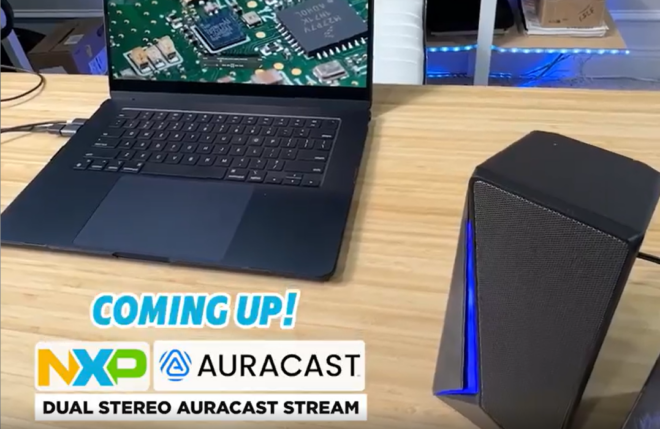
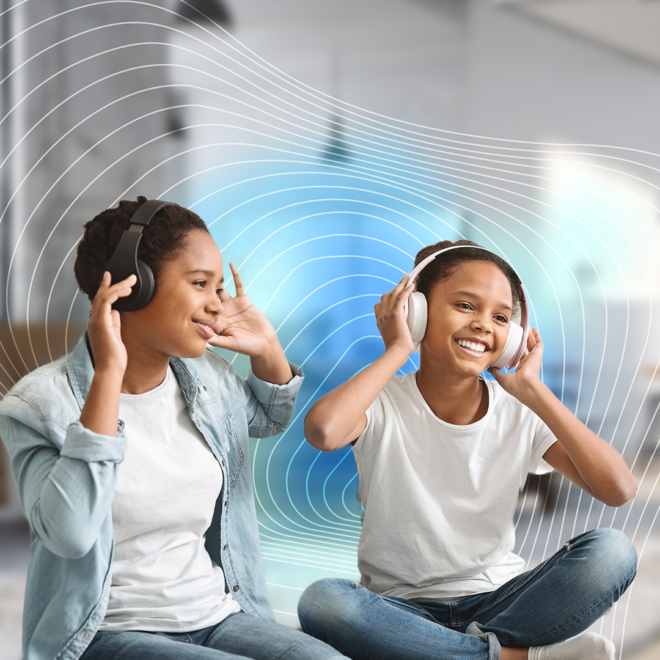
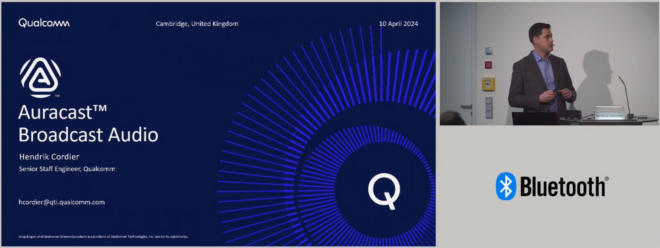



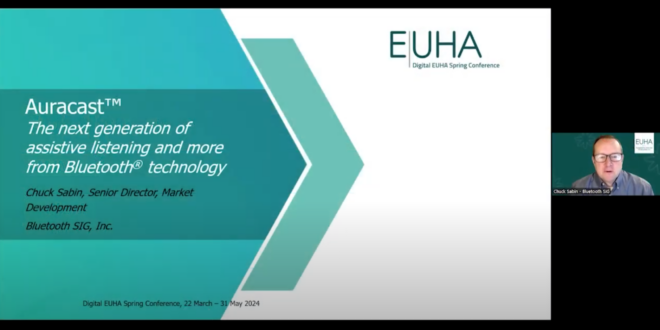
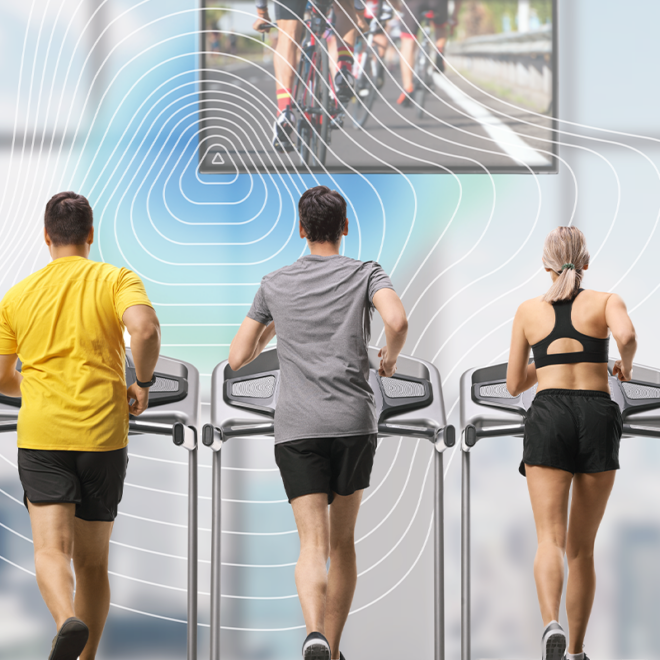
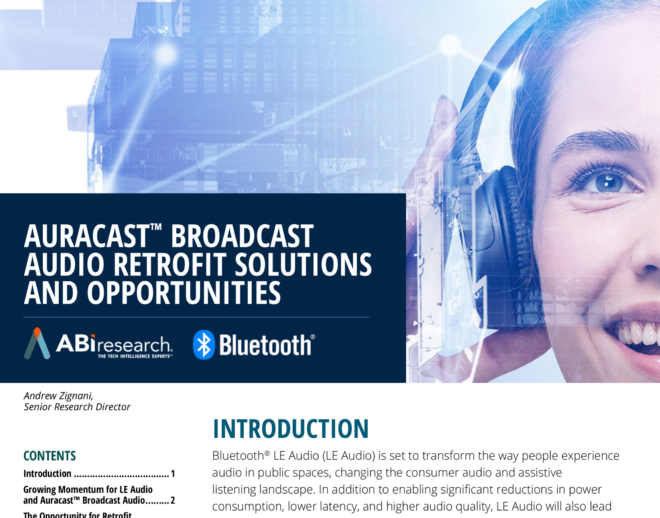
![packetcraft logo tagline[1]](https://www.bluetooth.com/wp-content/uploads/2024/03/packetcraft_logo_tagline1.png)
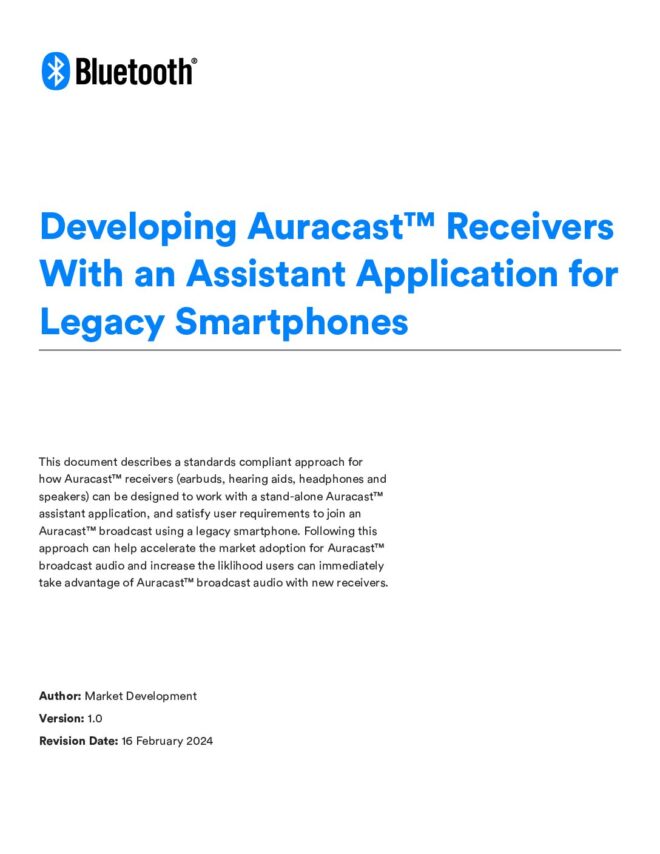
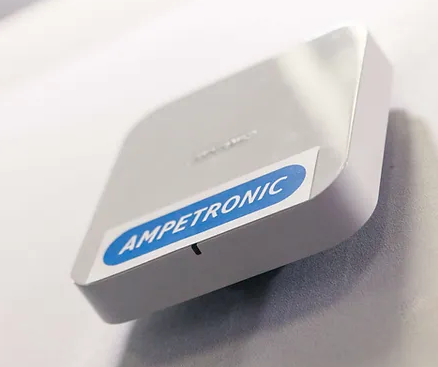
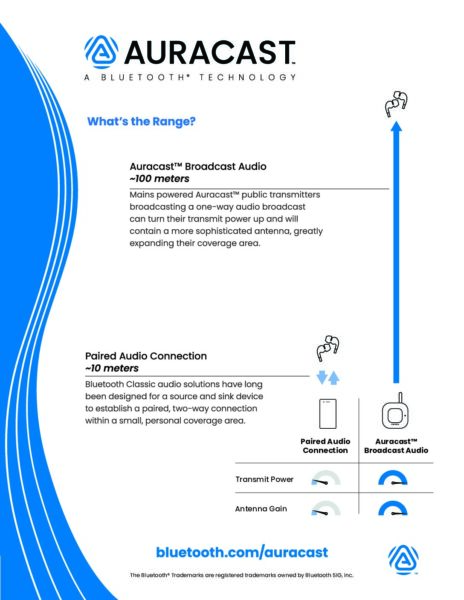
![2312 CES Handout Images FINAL existing pdf 464x600[1]](https://www.bluetooth.com/wp-content/uploads/2024/01/2312_CES_Handout-Images_FINAL-existing-pdf-464x6001-1.jpg)
![2312 CES Handout Images FINAL unlimited pdf 464x600[1]](https://www.bluetooth.com/wp-content/uploads/2024/01/2312_CES_Handout-Images_FINAL-unlimited-pdf-464x6001-1.jpg)
